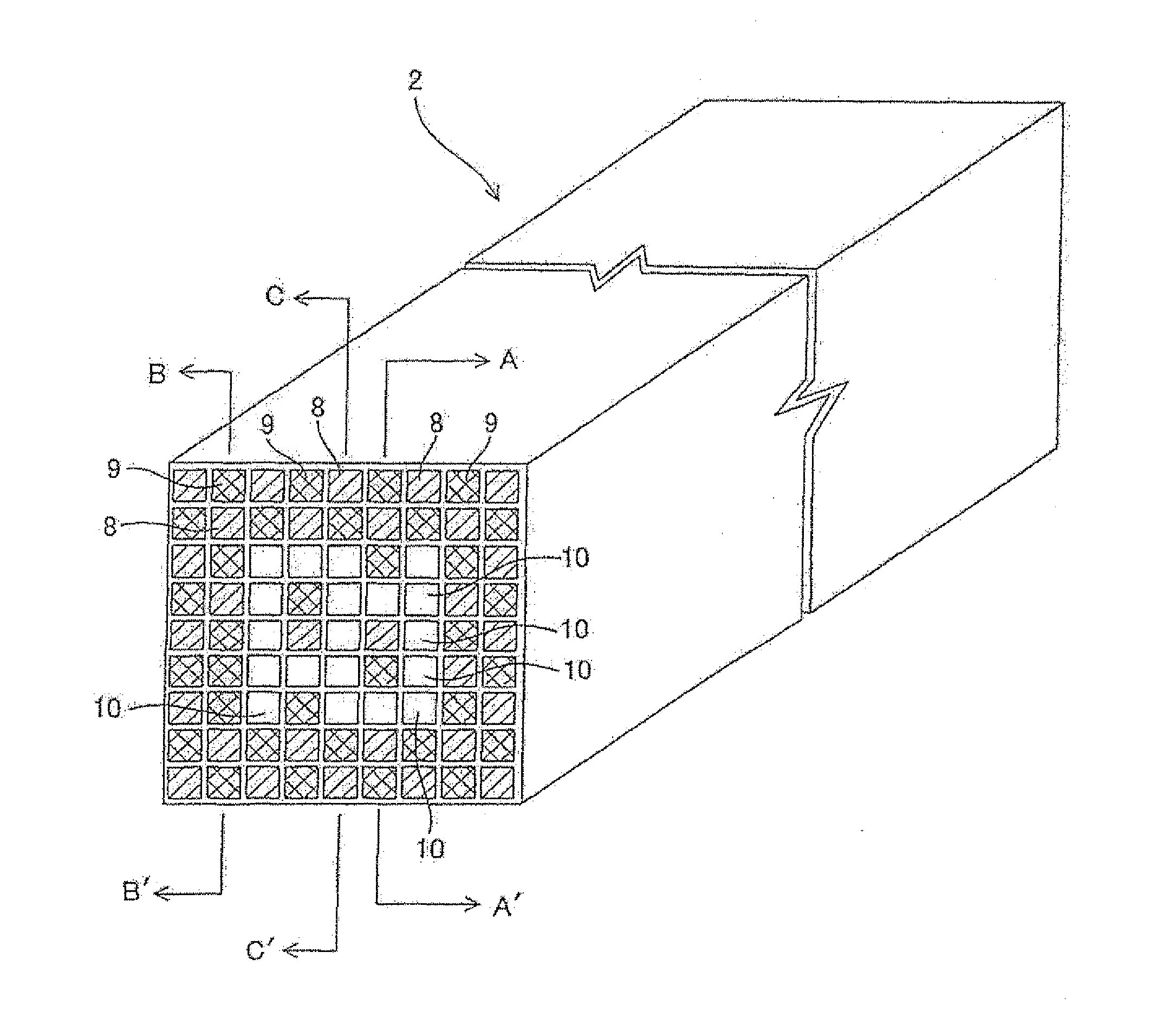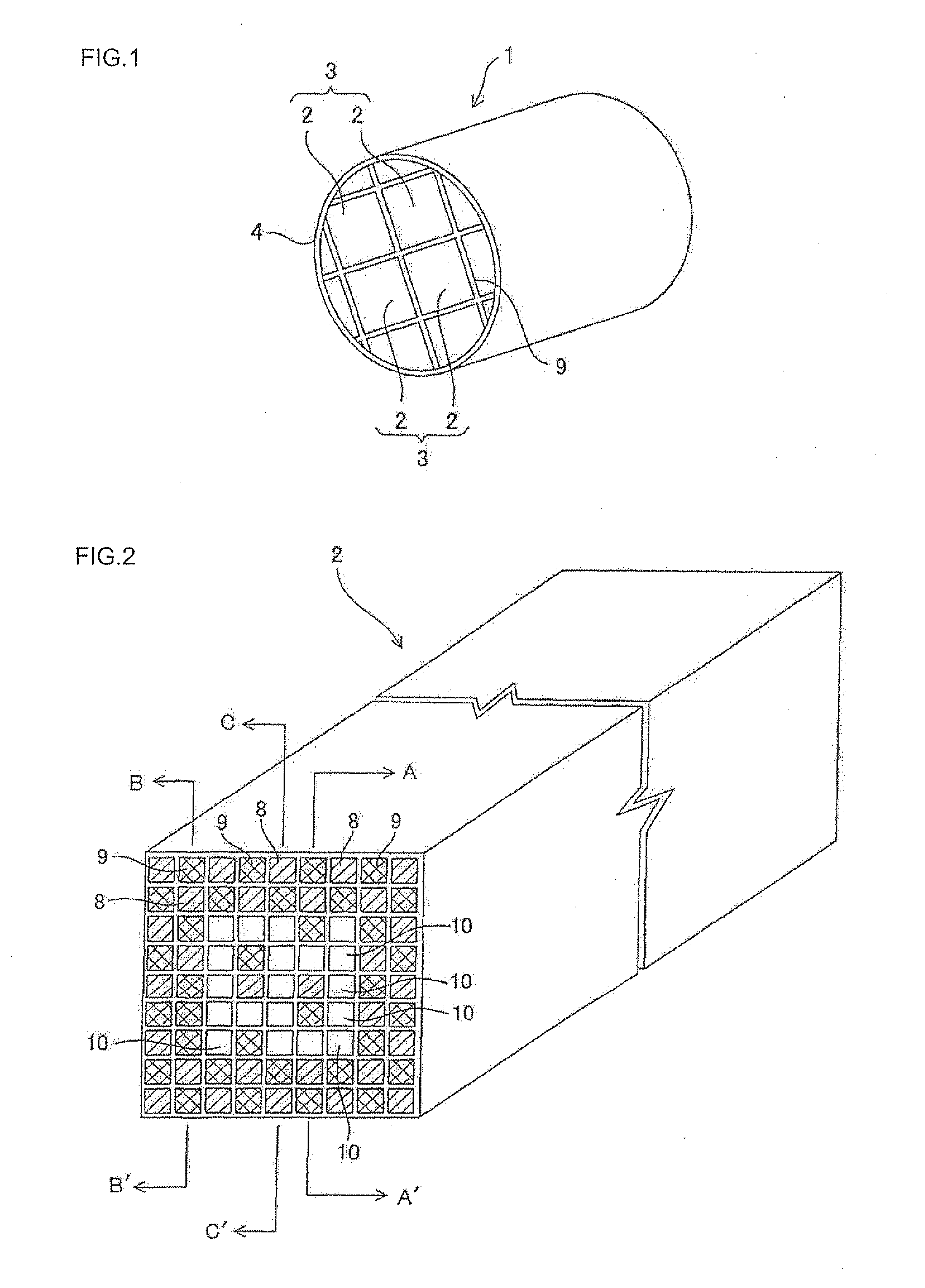Partially plug-less dpf
a filter and particulate matter technology, applied in the field of ceramic filters, can solve the problems of crack generation, decrease purification efficiency, increase pressure loss, etc., and achieve the effects of improving regeneration limit, reducing the amount of soot (particulate matter) deposited, and raising the passage flow ra
- Summary
- Abstract
- Description
- Claims
- Application Information
AI Technical Summary
Benefits of technology
Problems solved by technology
Method used
Image
Examples
example
[0145]The regeneration test at an engine bench was performed, and, with evaluating temperature where a crack is generated, PM emission was evaluated in a vehicle to consider the optimum design in view of the temperature reduction effect by increase of the through-cells and PM emission deterioration (decrease in trapping efficiency). The specific test method was as follows:
[0146](Regeneration Test)
[0147]In the first place, a DPF is mounted on a 2.0 L diesel engine, and a predetermined amount of soot was deposited, followed by driving at 2000 rpm×50 Nm. Next, the DPF inlet gas temperature was raised to 650° C. by post-injection. When the pressure loss in front and at the back of the DPF started to fall, the post-injection was stopped, and the engine driving state was made to be an idle state. At that time, since the oxygen content rapidly increased, and the flow rate was decreased, the DPF internal temperature rapidly rose, and a crack was generated in the DPF outlet end face when the...
PUM
| Property | Measurement | Unit |
|---|---|---|
| length | aaaaa | aaaaa |
| length | aaaaa | aaaaa |
| diameter | aaaaa | aaaaa |
Abstract
Description
Claims
Application Information
 Login to View More
Login to View More - R&D
- Intellectual Property
- Life Sciences
- Materials
- Tech Scout
- Unparalleled Data Quality
- Higher Quality Content
- 60% Fewer Hallucinations
Browse by: Latest US Patents, China's latest patents, Technical Efficacy Thesaurus, Application Domain, Technology Topic, Popular Technical Reports.
© 2025 PatSnap. All rights reserved.Legal|Privacy policy|Modern Slavery Act Transparency Statement|Sitemap|About US| Contact US: help@patsnap.com



